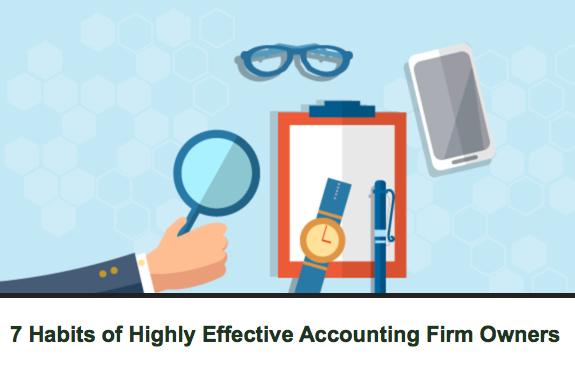How To Never Lose Your Biggest Client Ever

Clayton Oates, a Top 25 Thought Leader in Accounting, has spent 20 years helping firms, like yours, never lose your biggest client.
The catch. “If you haven’t lost your biggest client yet…just wait.”
Sounds contradictory, but the point is: If you establish the right nurturing steps for old clients in place, plus growth steps to find bigger and bigger clients, you’ll always have a larger client than your current one.
In this episode of Growing Your Firm Podcast, David Cristello and Clayton Oates go into:
- The real purpose of your business (it’s not to make money or do taxes)
- Clayton’s blueprint for nurturing old clients and growing new ones
- The #1 thing you can do so you never lose your biggest client
ADDITIONAL LINKS:
- LINKEDIN — Clayton Oates
- TWITTER — Clayton Oates
- Clayton’s personal website
- “Go-Giver” book
- Peter Drucker
- Tony Robbins
- 5 Simple Steps To Turn Your Firm Into a Radical CPA Firm (interview)
- Define Your Strategic Goals (interview)
Will You Burn Out From Your Accounting Firm?
Clayton Oates acts as the Chief Solutions Officer for QA Business Pty for 20 years. The goal — help businesses run more efficiently with stronger processes. The main focus of efficiency: Growth.
See, when you started your firm, you danced around with nervous energy. Giddiness as you drove to work or opened Quickbooks. Suddenly, three to five years pass and you hit a brick wall.
The grunt work really begins. You wonder: Is this it?’
You wonder because now you’re stuck in the minutiae of the entrepreneur grind. This typically occurs when you lose track of your “WHY.”
Why are you in business?
The quick and dirty answer you immediately think of is — to make money…change the world. Whatever you think.
Actually, at its core, a business’ purpose is quite simple. Peter Drucker, one of the most famous business minds ever agrees. The purpose is to attract and retain the right customers. That’s all.
When you understand your “WHY” for being in business, you attract and retain all the right customers. When you focus on the “how” and “what” and “money,” you’ll see growth sputter.
That’s what Clayton discovered when he first plunged into helping accounting firms.
The Story That Might Resemble Yours:
Clayton started off as an ‘ordinary’ accountant. For awhile, he did the daily bookkeeping and such exhausted and unfulfilled. He wondered if he’d even stay in the profession.
Then, in 1994, he uncovered major shifts in the accounting industry’s technology. He realized technology could save business owners hours a week when did properly.
Clayton went before his accounting firm’s management team to describe the shift he saw. They agreed wholeheartedly on tackling this shift in technology head-on for the clients of the firm.
Unfortunately, they were not going to dedicate any added resources to the project. Looking back over 20 years later, this is where Clayton’s company found its foundation.
Alone, Clayton bundled together packages for clients offering support and guidance with the use of technology to give business owners back more of their own life.
After the concept proved itself, Clayton went back before the management team asking for help, finally. They declined. A short while later, Clayton started his own company helping businesses with their efficiency. Later, progressing into consulting on growth and retention of clients so you never lose your biggest clients.
Clayton bootstrapped it with little funding, proving you can grow without massive funding if you’re willing to put your best foot forward.
DAVID’s TIP: I’ve heard multiple times with past guests — go back to your old firm and offer ways to help them out. What you’ll find is you might get some business out of it. A joint venture if you will. An excellent way to growth with little cash.
Clayton’s Blueprint for Nurturing Old Clients and Growing New Clients:
The juggle firms face is with old clients and new clients. New clients need to feel at home, old clients need to feel taken care of.
Clayton’s seen with too many firms how old clients get lost in the shuffle of new business. He’s also seen firms rest on their laurels and not go head-on into the marketplace to find new prospects.
You might be happy with how your firm chugs along right now. However, I’m a huge Tony Robbins fan. What Tony says again and again resounds in my soul and all those here at JetPack Workflow — Raise Your Standards.
Clayton’s company writes down certain truths to keep old clients happy and grow with new clients. What you’re about to read is pretty simple, yet imperative.
- Deliver on promises to old clients whether with deadlines or performance
- Deliver proposals to new clients within 24 hours
- Always keep the CRM of new/old contacts updated and refreshed for marketing purposes
- Always provide feedback and thank with gifts individuals and firms who refer you new business
- Attend all meetings with an open mind on how to improve the firm for clients
- Ask yourself with every client interaction: “Have I done everything to ensure the person I deal with would recommend me to their friends?”
- With any partnership or client, never point out what they do wrong. Rather, offer creative ideas on how they can improve in a constructive manner.
All of these points add up to a growing and nurturing business. Yet, they aren’t the #1 way to never lose your biggest client.
#1 Way To Never Lose Your Biggest Client
Clayton sees so many firms and managers invest their time in better accounting skills, nicer offices, more certifications…everything to improve the technical skills of the team.
Here’s the rub — those don’t bring in more clients nor keep you so you never lose your biggest client.
Actually, it involves doing much more than thinking of your skills. Rather, it is this: Put the customer first in your time and investment.
Meaning, approach decisions, interactions, work, more-energy-than-you-think contemplating your clients business and advising them on it. When you do that, you can add value.
Much like, recently, a guest on the podcast, out of the blue, sent me a book they thought I’d find interesting based on our conversations. That’s a quick example of thinking of clients and prospects first and what helps them the most.
You’ll find you aren’t worried about billable hours and profit, but the betterment of your clients and their lives. You have knowledge that can change their lives…you just need to offer it all the time.
Now that you’ve gotten steps to nurture old clients and grow new ones, share your comments below on what your firm does.
Related Articles:
















